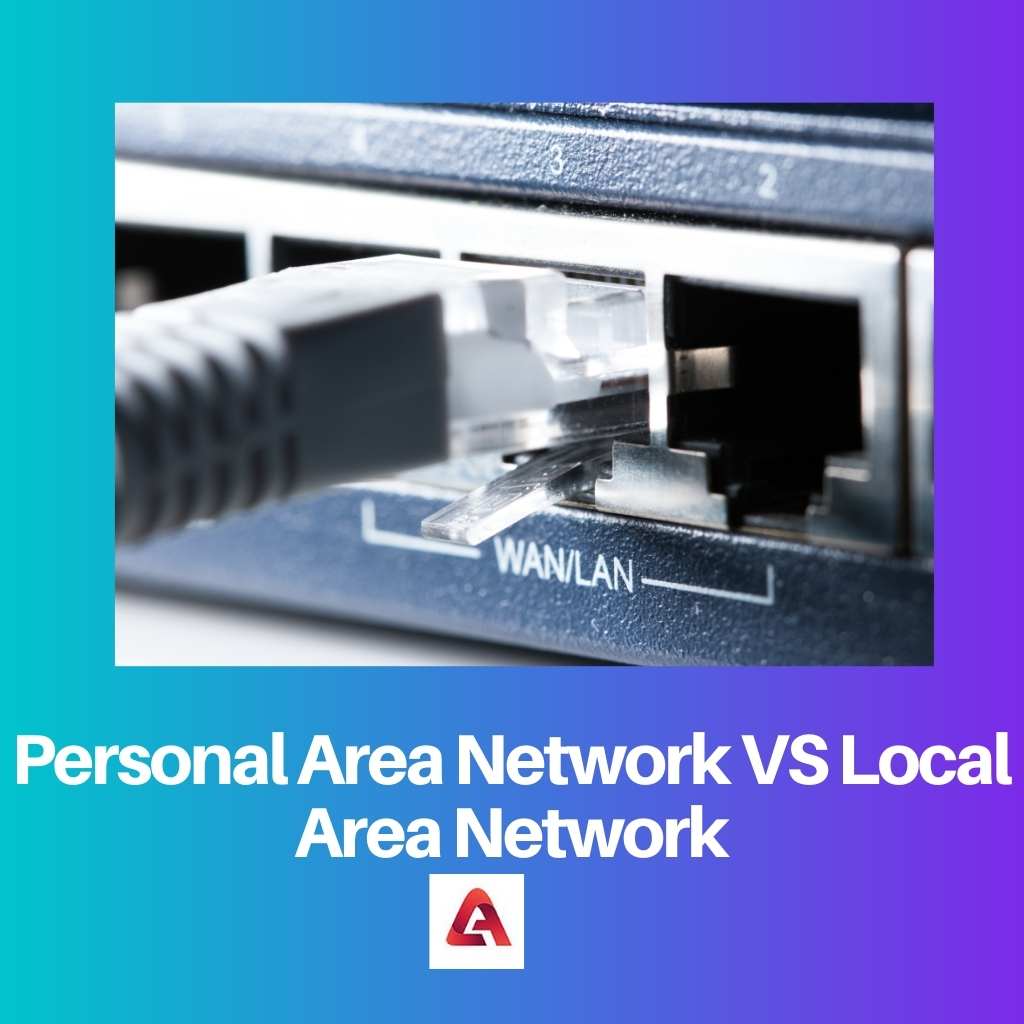Computers changed human lives. Our lives have been made easy with technology and computers.
Internet improved the application of computers. Several computers are connected to form a network. Networking helps to share data easily.
It reduces work and time. Computers used for a single purpose do the work effectively when connected.
This connection is exhibited by various methods.
Key Takeaways
- Personal Area Networks (PANs) connect devices within a small area, around a single user, such as smartphones, smartwatches, and laptops.
- Local Area Networks (LANs) link devices within a larger area, such as a home, office, or campus, and support shared resources like printers and file servers.
- PANs are focused on individual users and their devices, while LANs connect multiple users and devices within a defined area.
Personal Area Network vs Local Area Network
A personal area network is a type of network which is used to connect multiple devices. It connects devices within a particular area. A connection between a personal computer and a mobile phone is an example of a personal area network. A local area network can connect devices up to 10 km. Wi-Fi is an example of a local area network.

A personal area network is a personal computer networking. Here, the devices of a person are interconnected.
It helps him to fetch data from any of his devices. This networking provides a personal workspace.
Computers, smartphones, personal assistants, and tablets can be interconnected in a PAN. PAN devices can be connected to the internet using one device as a gateway.
Local area network is established in houses, hospitals, and educational institutions. Wi-Fi is an example of a LAN.
A Wi-Fi network of a particular institution connects all the devices connected to it. This technology was developed in 1970 by a laboratory.
It was initially called the octopus network. Cambridge University started its LAN called the Cambridge Ring in 1974.
The European Parliament election installed the electronic voting system using LAN networking in 1979.
Comparison Table
| Parameters of Comparison | Personal Area Network | Local Area Network |
|---|---|---|
| Speed | Slow | Fast |
| Efficiency | Less efficient | Highly efficient |
| Number of devices | Low | High |
| Types | Wireless and Wired | Client-server LAN and peer-to-peer LAN |
| Examples | Bluetooth | Wi-Fi |
What is Personal Area Network?
A personal area network is helpful at a personal level. Interconnecting your devices allows you to access the data in the Master device and the connected devices.
Connecting the PC with mobile phones and tablet is an example of a Personal area network. Wireless or wired PAN connections can be established.
The wireless personal area network is called WPAN.
WPAN extends connectivity to a shorter distance. It is low-powered.
The range of connectivity varies from a few centimeters to several meters. Wired PAN involves connecting the devices with the help of a cable.
USB is a Wired personal area network. IEEE-1394 and Thunderbolt also form the examples.
Technologies like wireless USB, IrDA, Bluetooth, and Zigbee are examples.
Wireless Personal area network has wide application now. This technology is present in earphones that connect to mobile phones without wires.
Bluetooth uses radio waves of short ranges. Bluetooth keyboard, mouse, pointing device, earphones, and printers use this technology.
The first device to make a connection serves as the master device. Other devices called the slaves communicate with the master device.
Normal Bluetooth connection exerts its connectivity from 10 meters to 100 meters. Large Bluetooth routers with antenna are used to attain connectivity up to 1000 feet.
IrDA connection uses infrared light. This technology is applied to TV remotes.
Printers, Keyboards, and serial communication interfaces use this IrDA technology. PAN networks ease the process of working.
What is a Local Area Network?
Local area networking decreased the cost and time of working. The manufacturing and commercialization of personal computers required the transfer of data.
It was done by storing or printing. Both were expensive and time-consuming.
Applying the LAN technique reduced the time and promoted proper working conditions. Novell Netware came as the solution for the demand for an ideal LAN.
Novell Netware remained as the top technology till 1990. With the advent of Microsoft’s Windows NT, the fame of Novell NetWare decreased.
Local area networking used cables to connect the devices in the past. The European Parliament election used cables of 10 km lengths.
Coaxial cables shielded twisted pairs, and optical fiber cables were the other alternatives for unshielded twisted cables. Wireless LAN connection can be installed easily.
Residences and offices use wireless connections. They require less maintenance.
Wi-Fi comes with modern gadgets like smartphones and computers. It has become prevalent in this modern world.
Hot-spot is also a form of LAN connection. Cabling and switching make the methods of establishing a LAN connection. Switches connected to modems, and routers help form a LAN connection.
LANs connected to other LANs. This type of connection is called the Metropolitan area network and Wide area Network.
LAN is employed in banks, hospitals, Offices, etc
Main Differences Between Personal Area Network and Local Area Network
- A personal area network can operate only within a shorter distance. It can extend up to 100m under ideal conditions. The local area network covers an area of up to 10 km
- A personal area network involves connecting personal devices that give a personal workspace. LAN involves connecting all the computers in an institution
- Examples of PAN include Bluetooth, Zwave, Zigbee, and Infrared. While that of LAN includes Wi-Fi and business networks
- A personal area network is meant for personal use and is less effective. LAN is effective and has a greater capacity. LAN is also faster compared to PAN
- Only a limited number of devices can be connected in a PAN connection. LAN involves connecting a large number of devices





